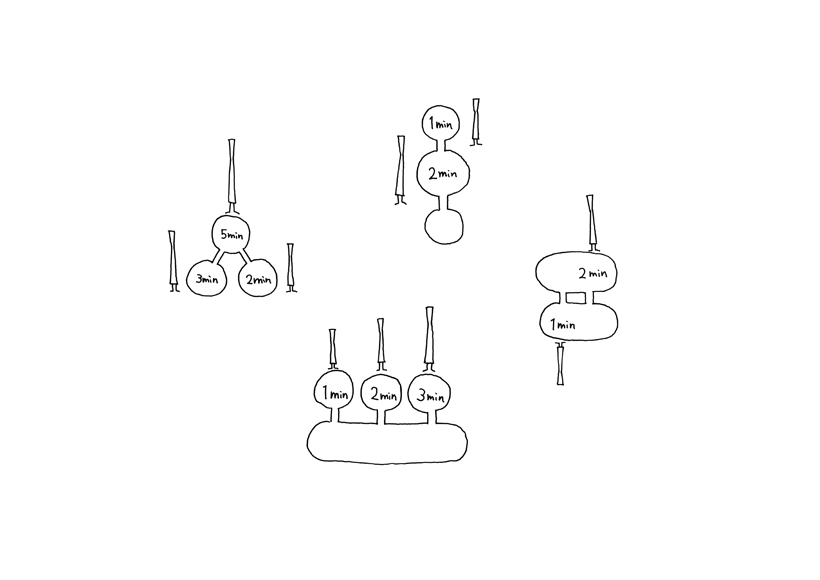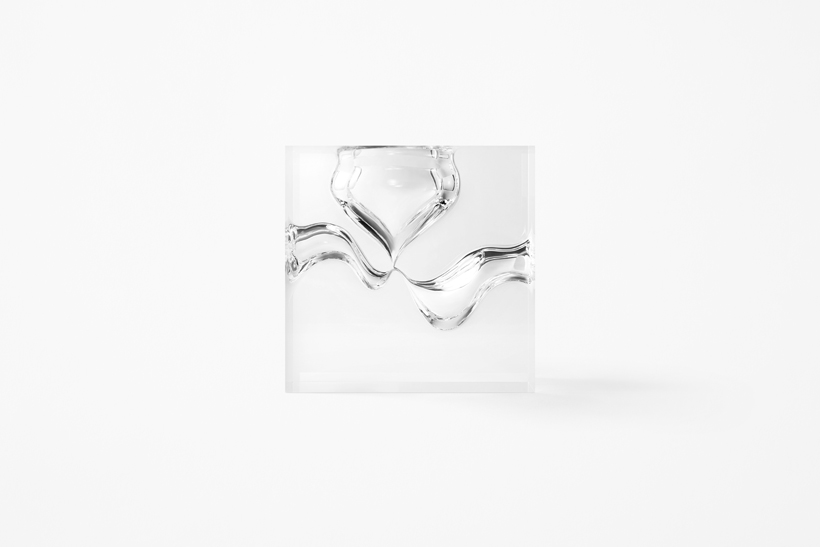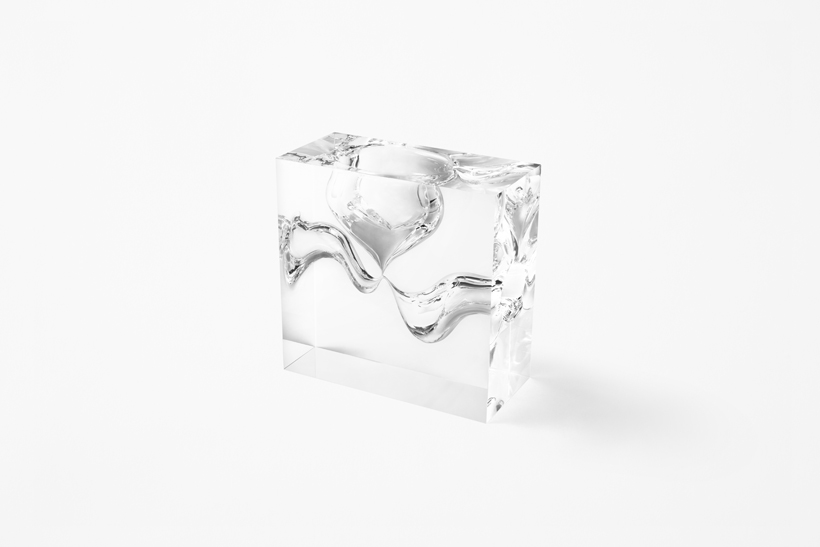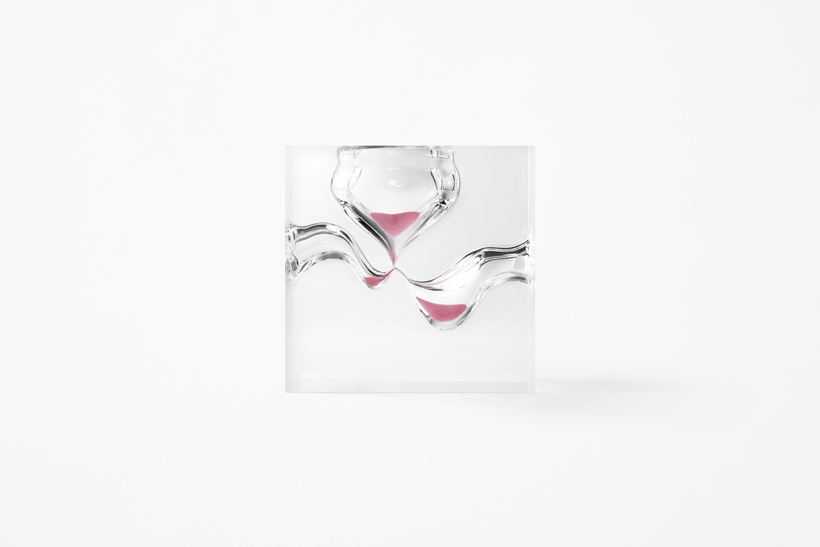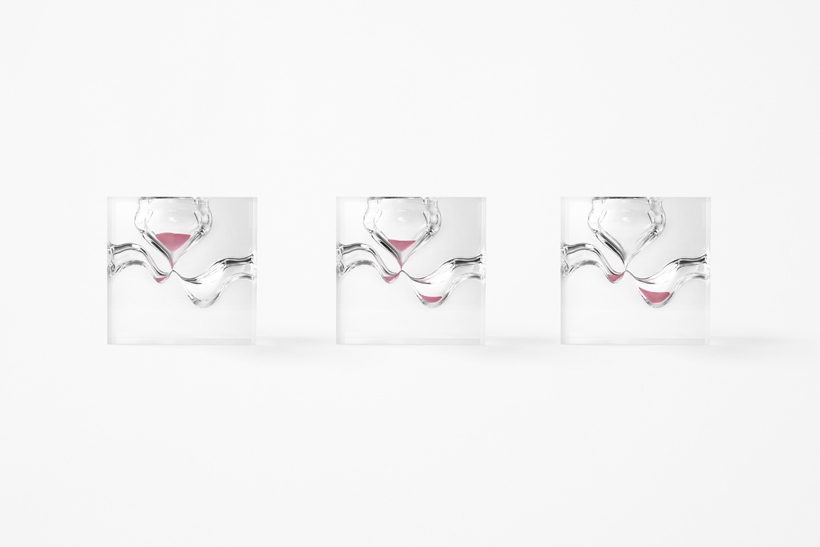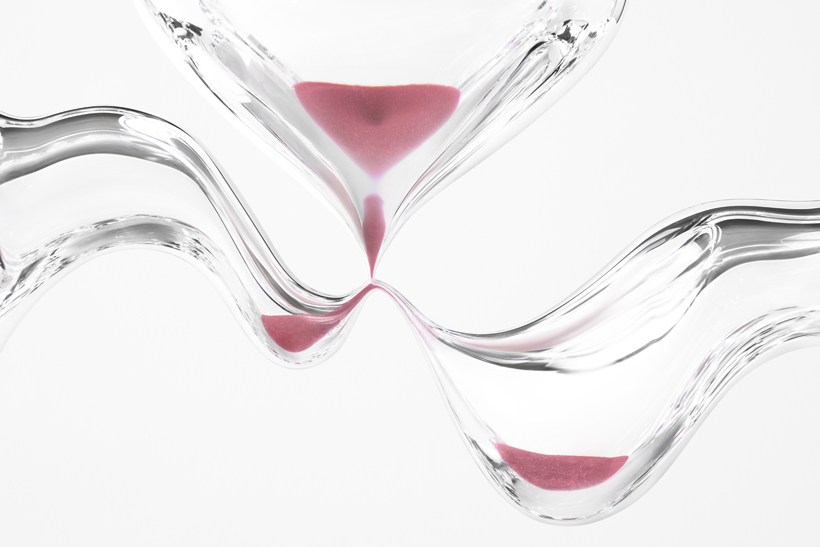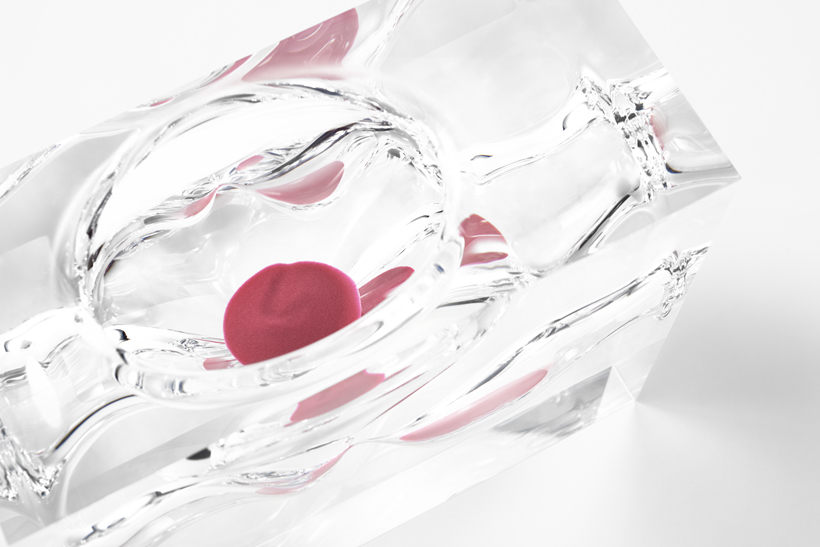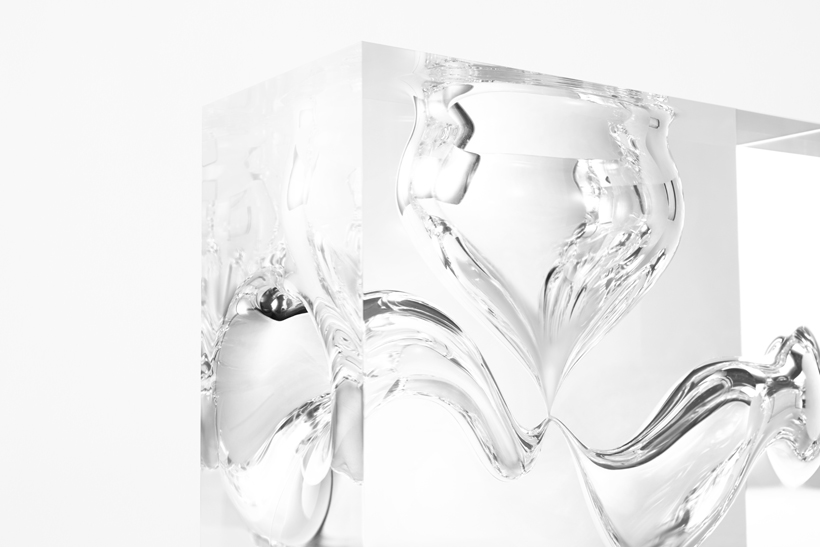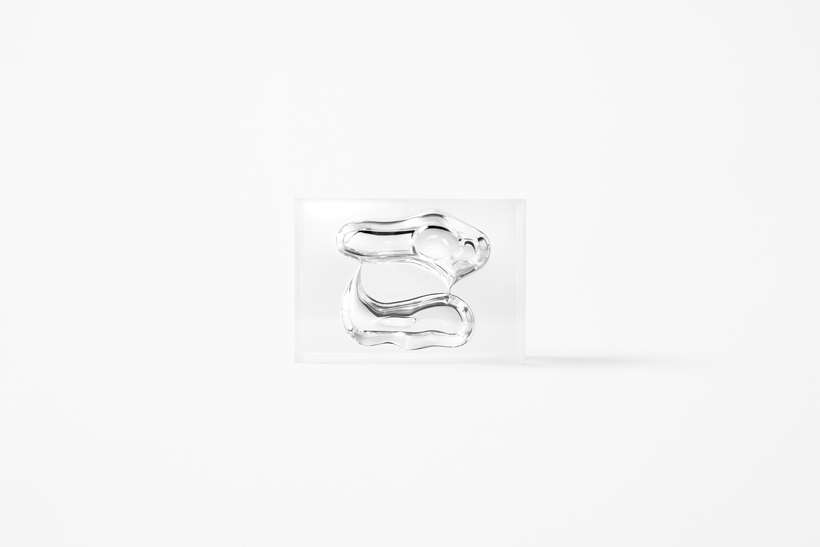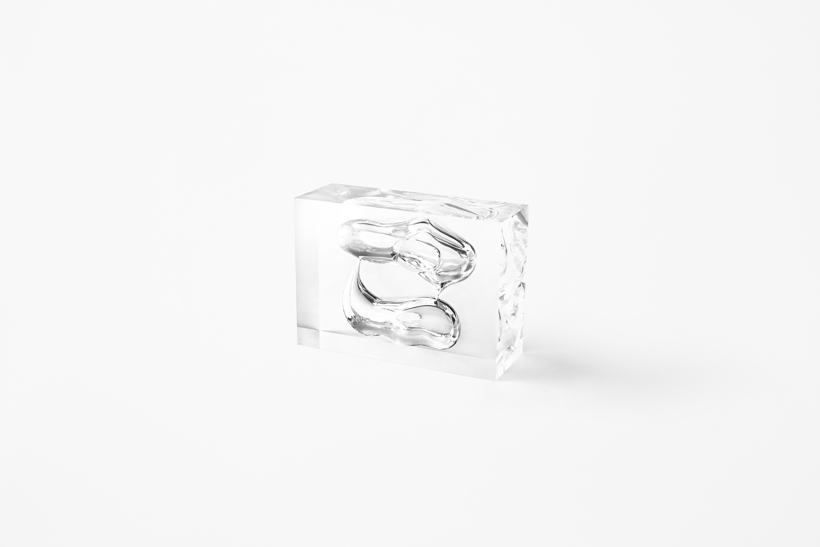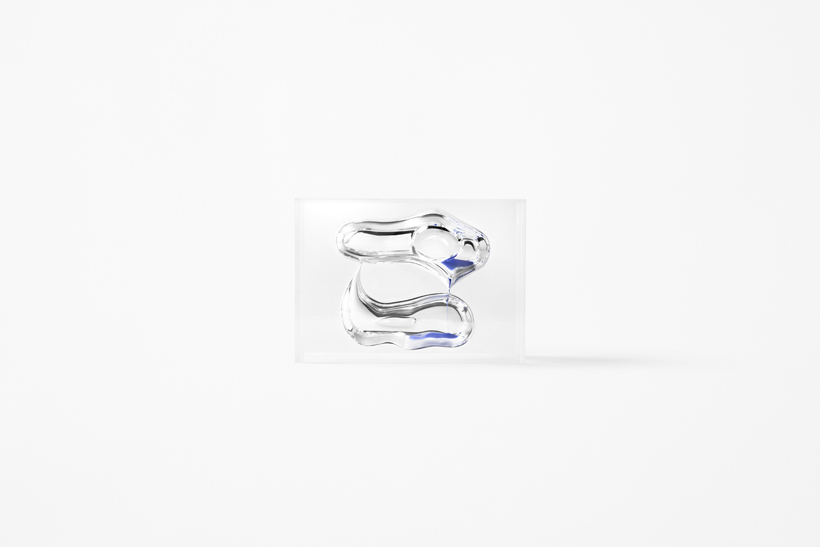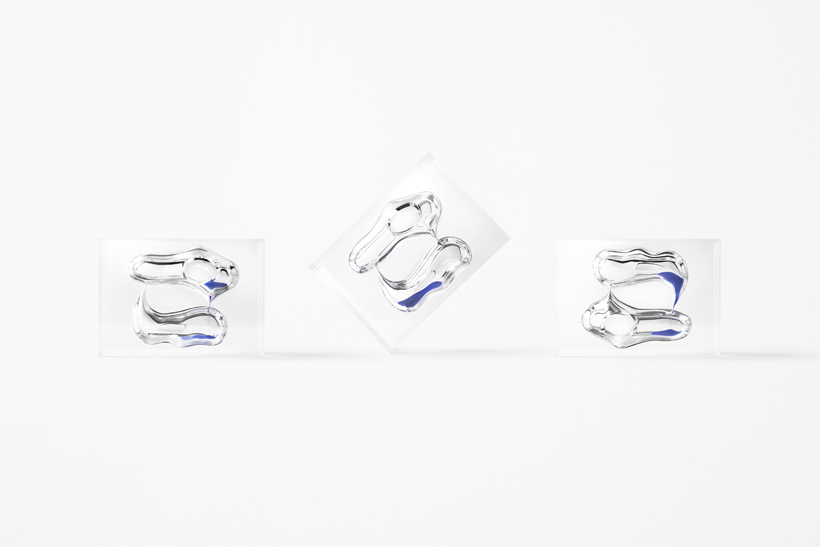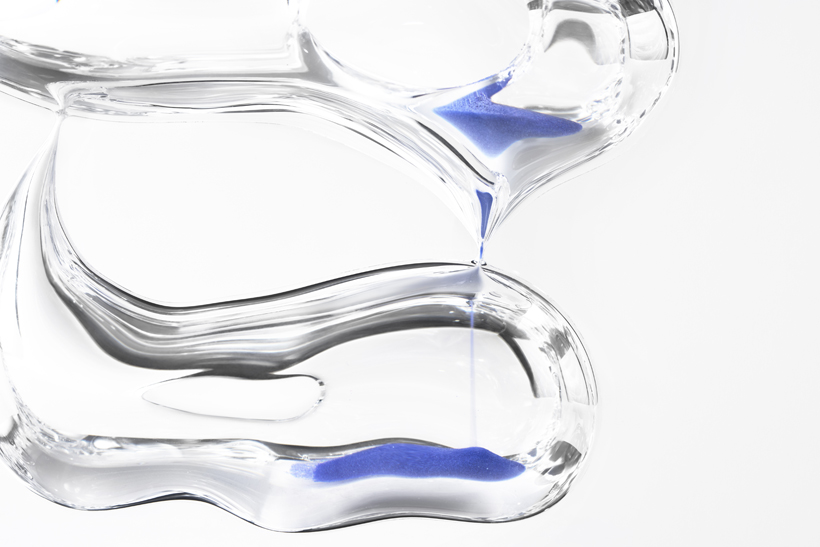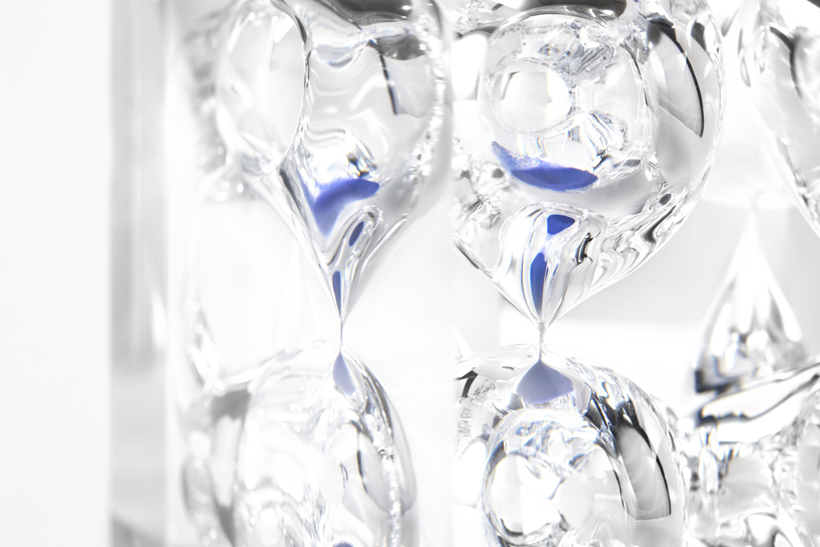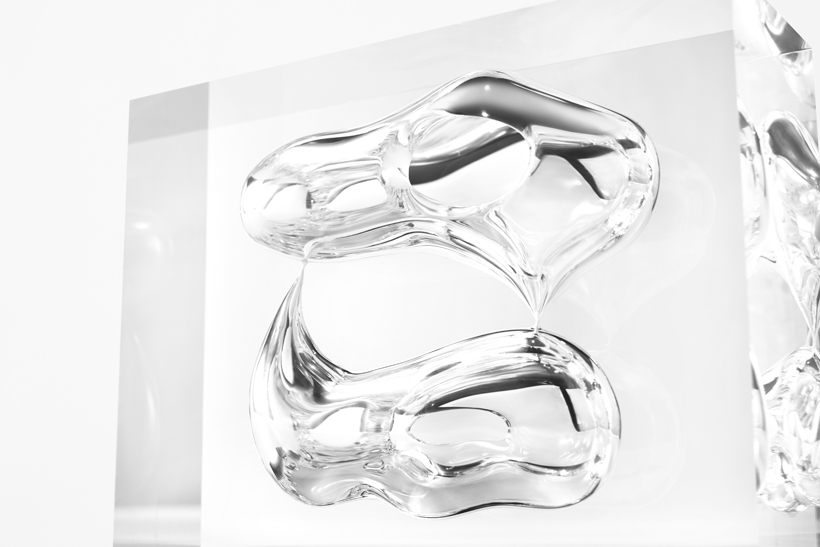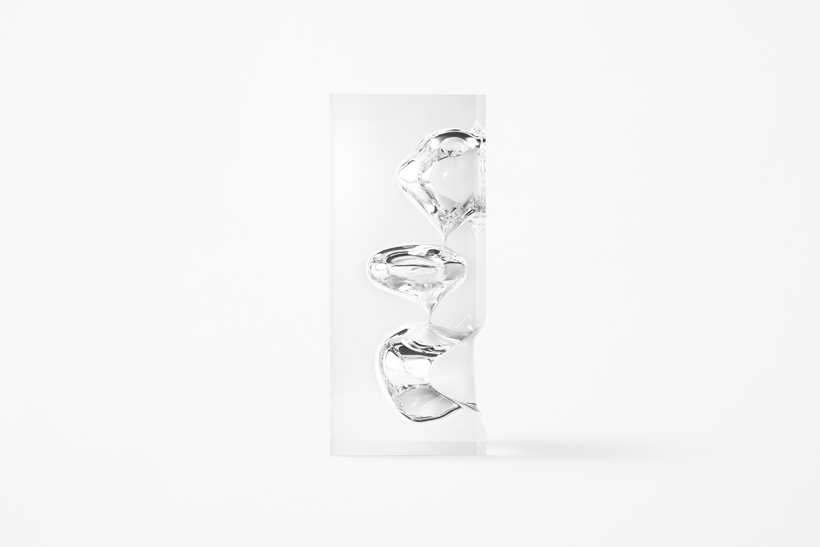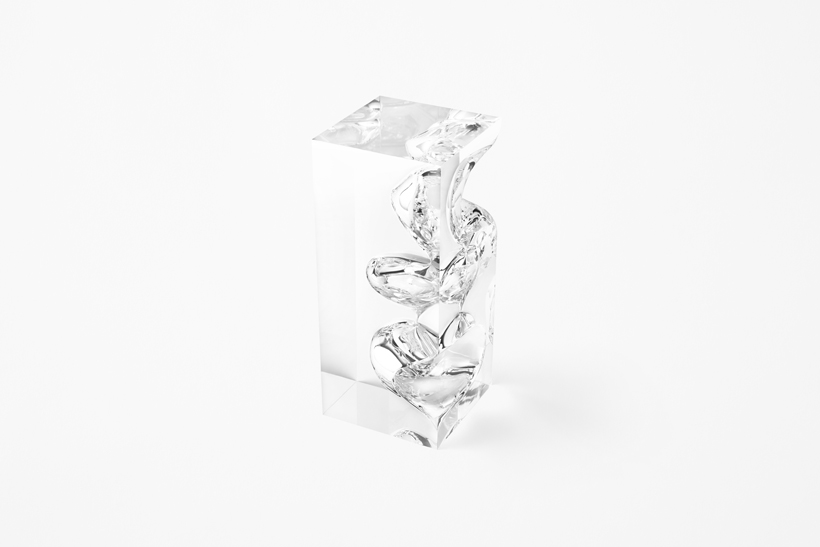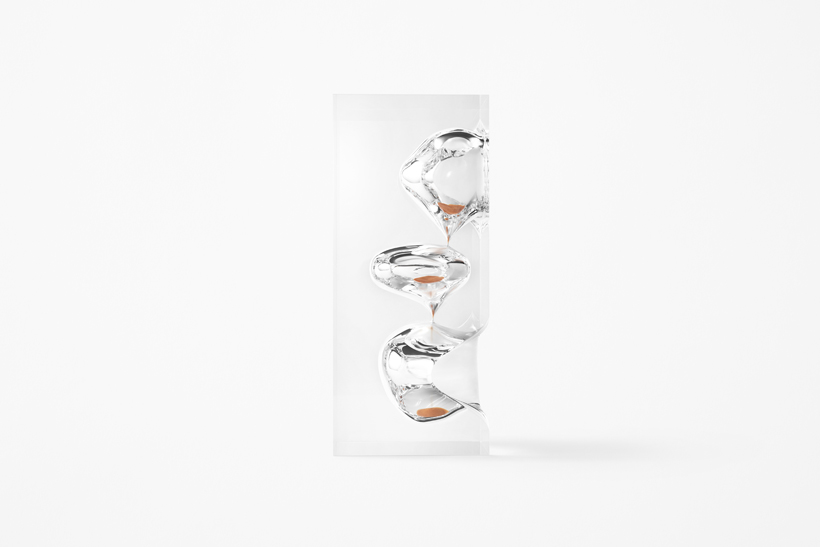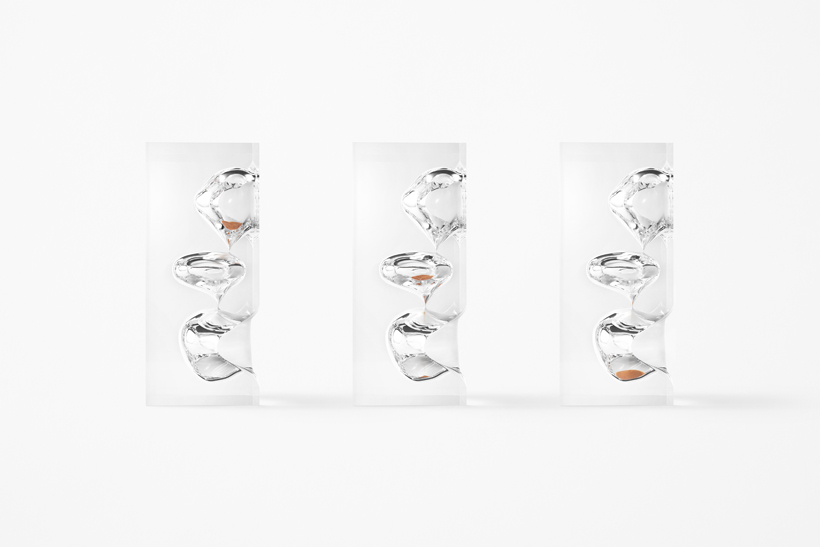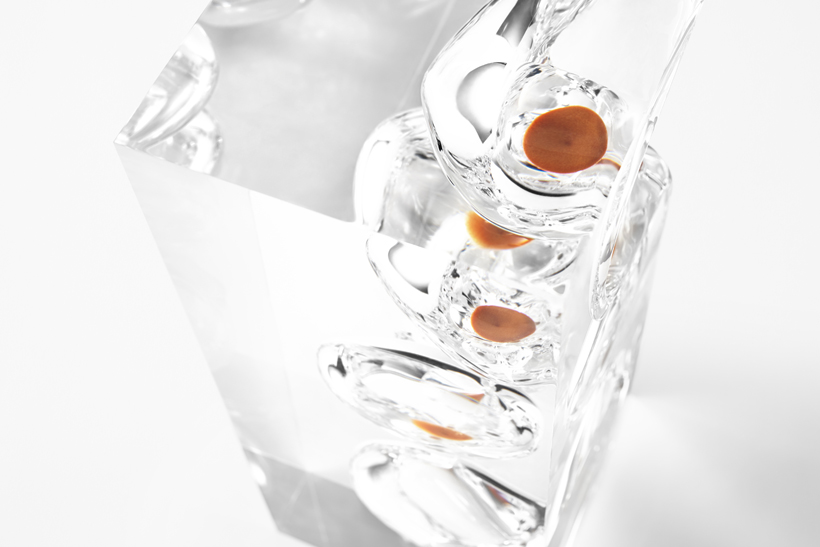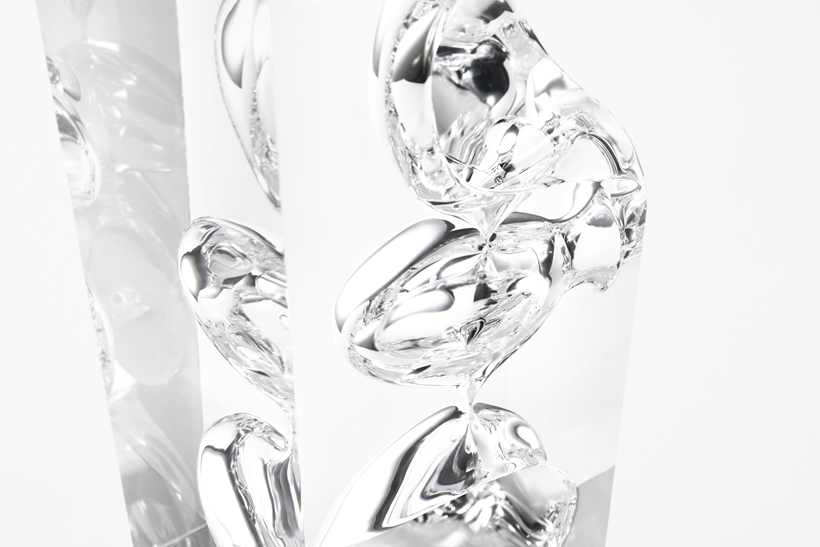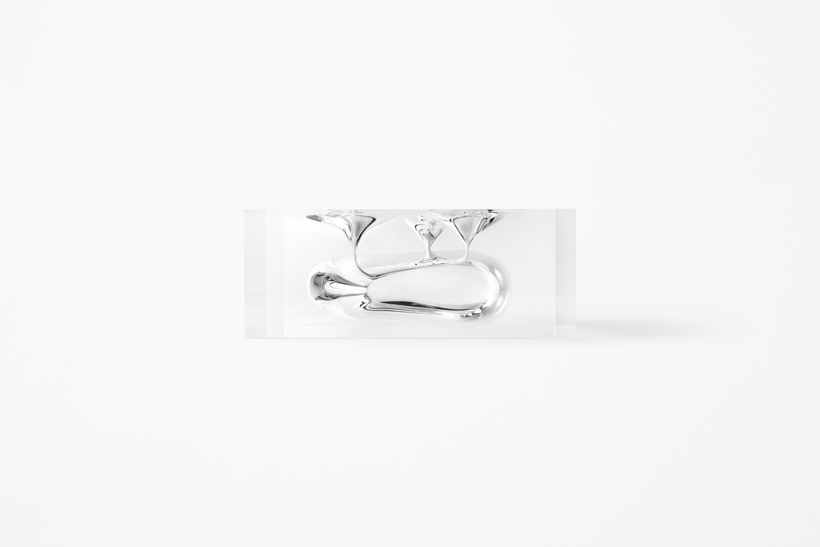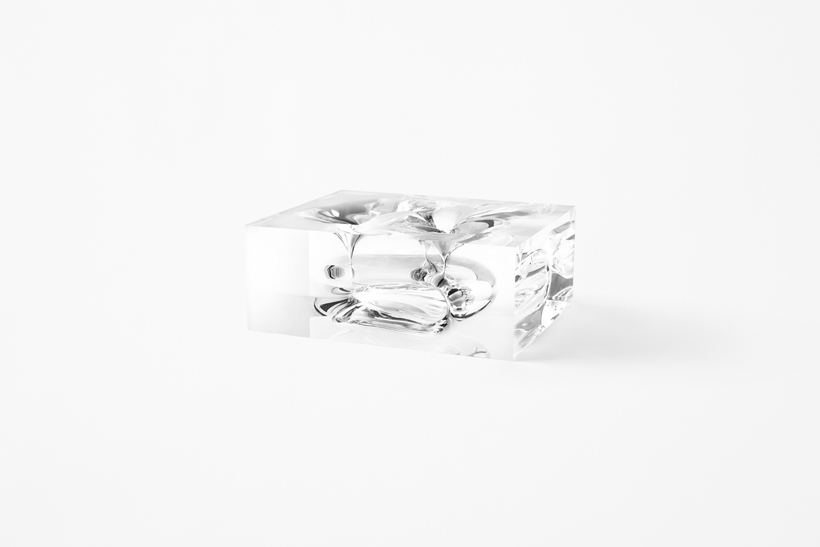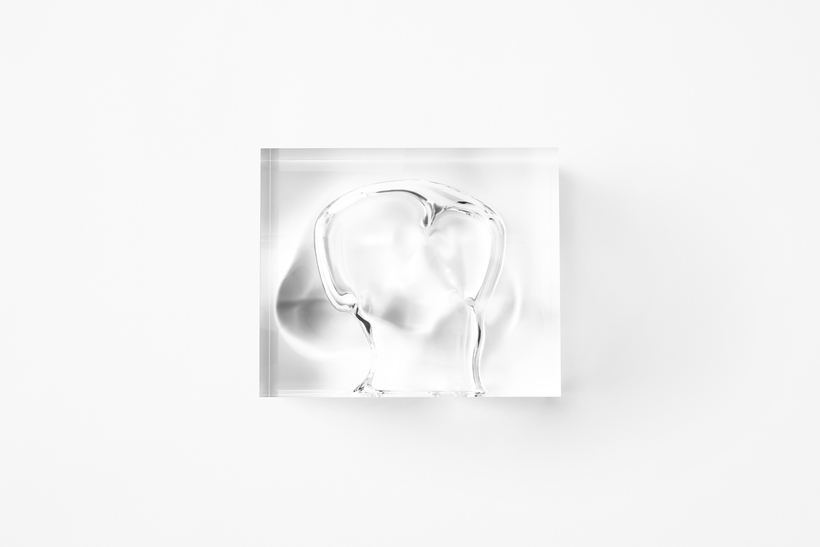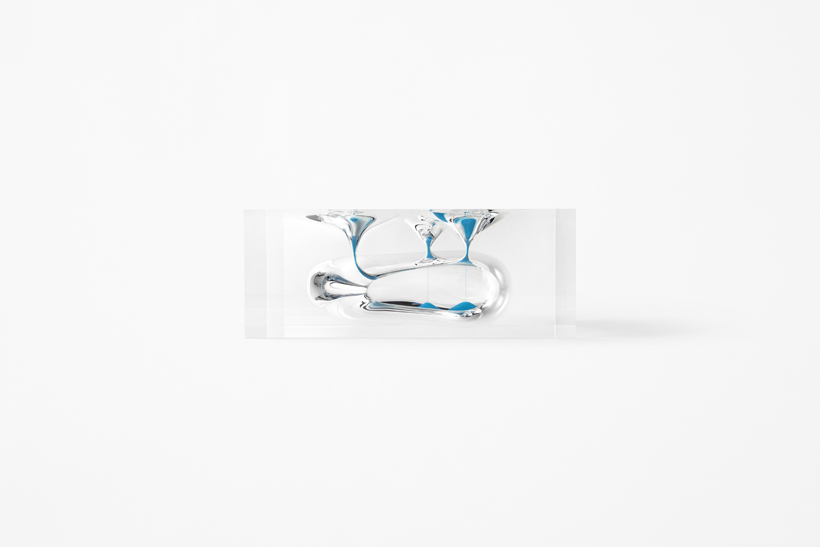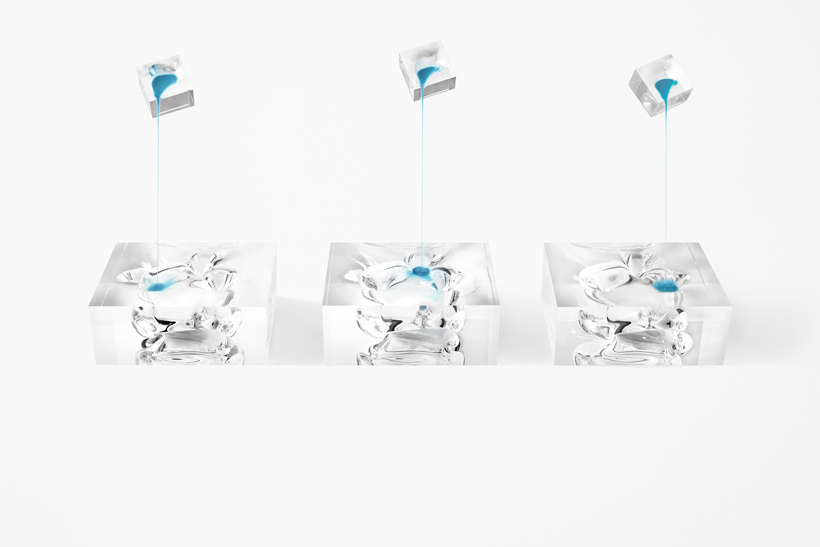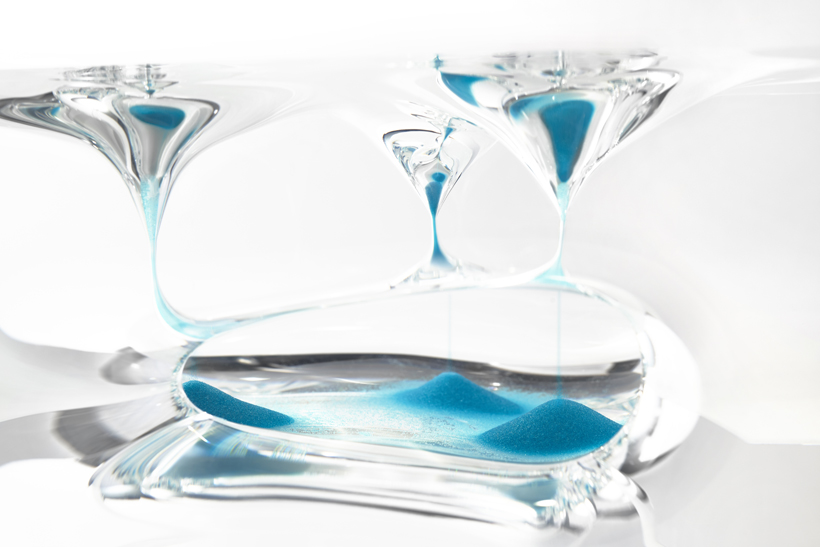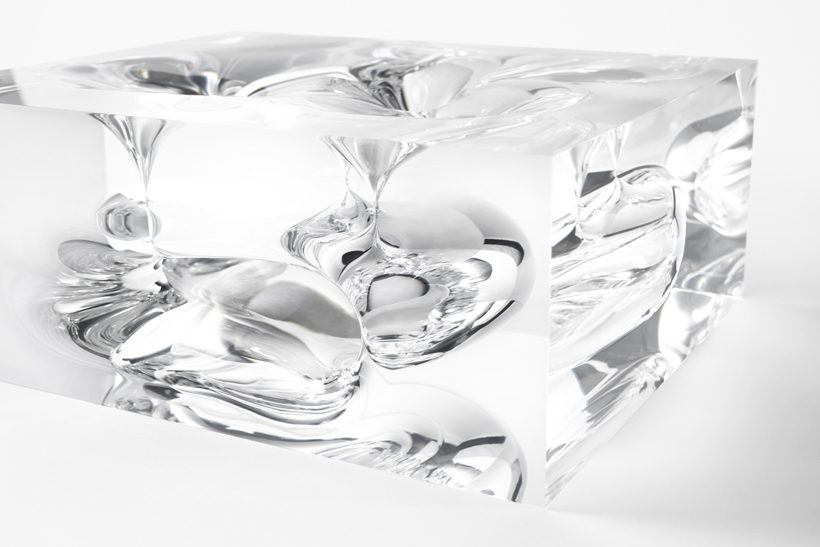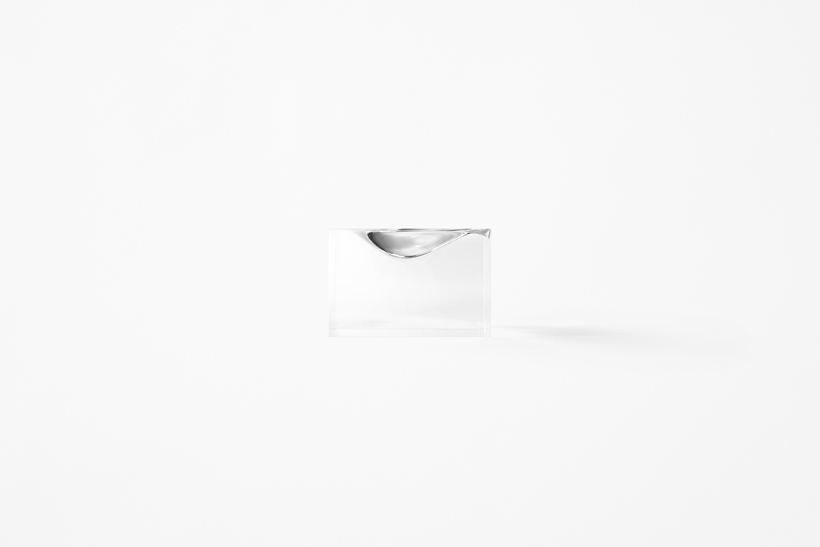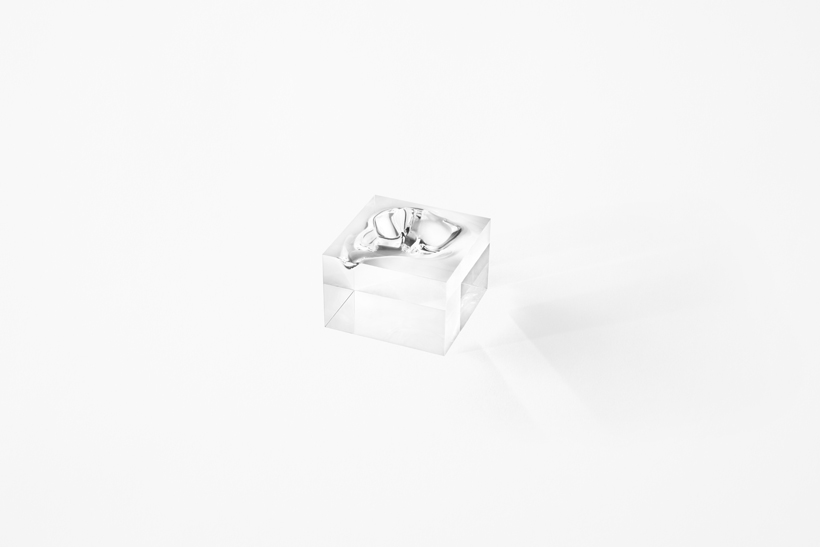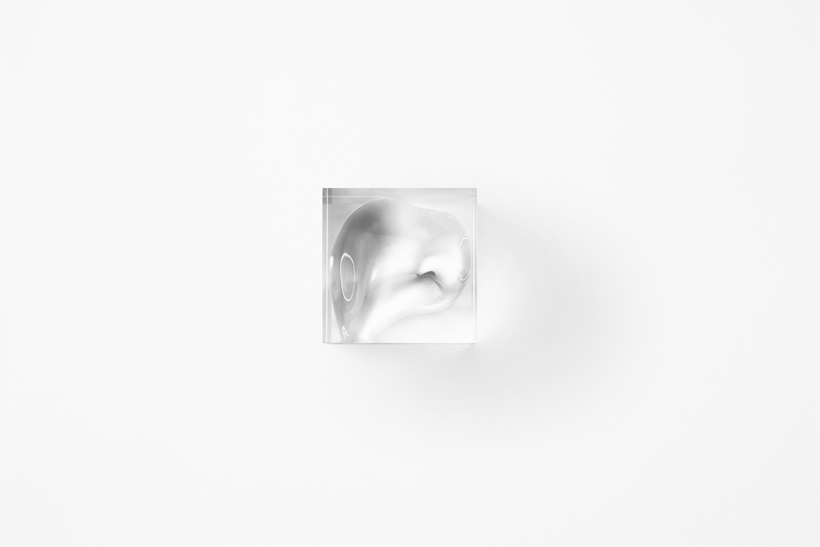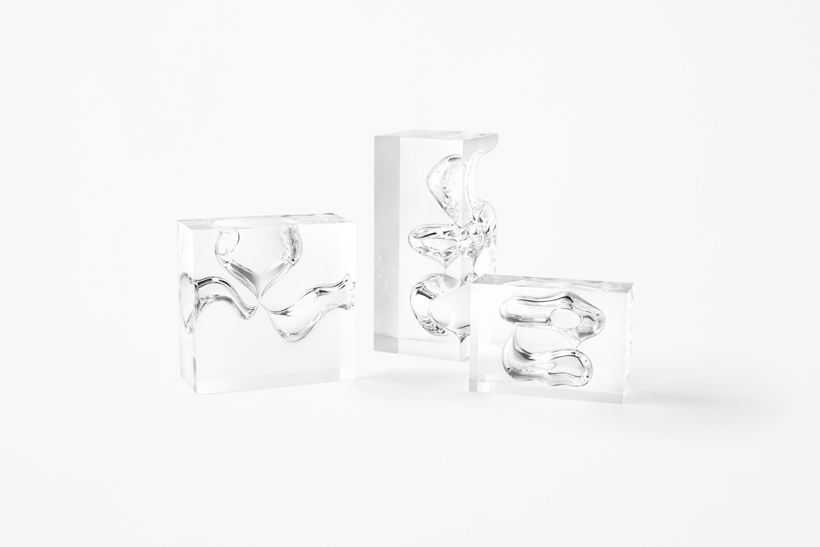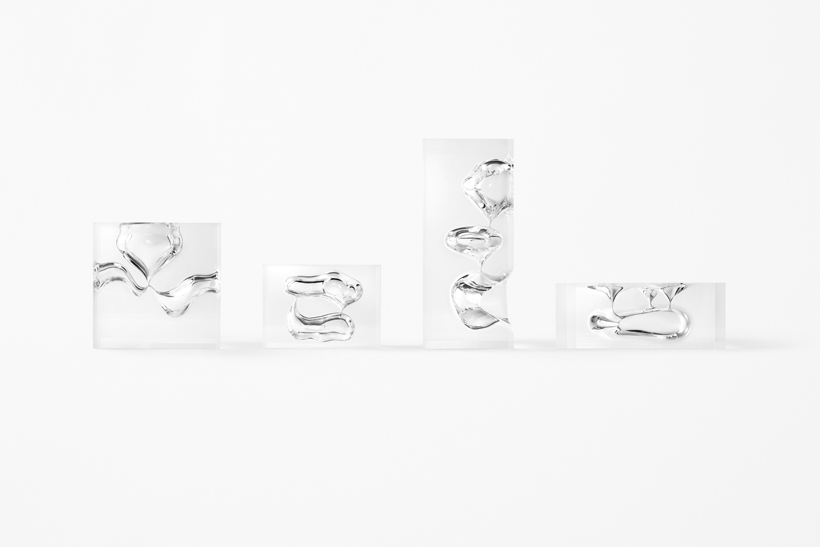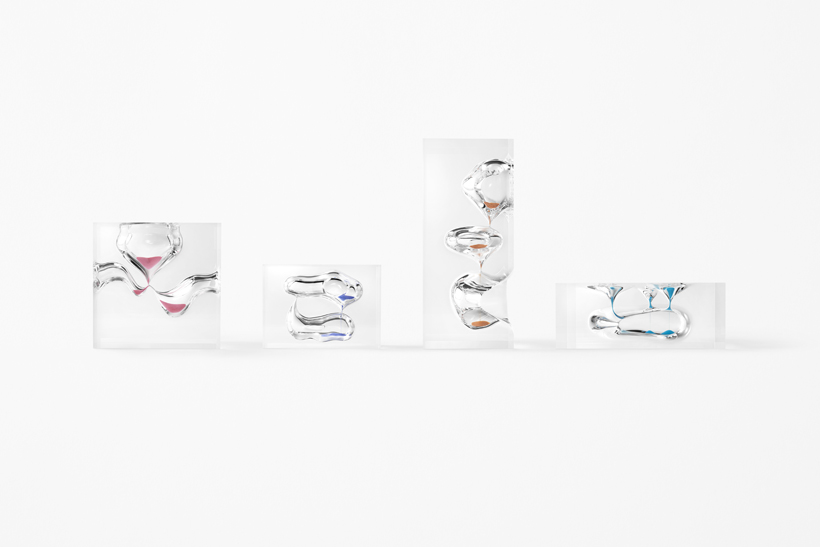variations of time
An hourglass is a device that has been used since antiquity, and is still being used in our everyday lives, its shape barely changing over thousands of years.
With the advent of digital clocks, the hourglass has transitioned from serving a functional role to convey more of a sentimental value, symbolizing the idea of time.
By examining this simple mechanism of sand falling through a constricted passage due to gravity, and altering the speed and the angle, one can actually change the perception of the flow of time.
In other words, the concept of this collection could be said to be “designing time itself”.
The four different hourglasses were carved out from a volume of transparent acrylic.
The interior cavities to accumulate the sand have been polished by hand with fine metal needles tipped with abrasives.
This production method gives the shapes an almost natural, organic appearance, resembling clouds and puddles, conveying the feeling that time is moving even more freely than it was before.
1.time divided
“Five minutes” worth of sand divided into two cavities; “three minutes” worth of sand accumulates the left chamber, when filling this chamber completely, the sand starts falling into the right chamber, counting additional “two minutes”.
2. time converted
The angles of the chambers control the movement of the sand; on the way going, sand travels down the right path counting “two minutes”. Once flipped over, and the sand is coming back, it is directed to the left route that counts only “one minute”.
3. time doubled
When sand falls from the first chamber into the second, it counts “one minute”.
Once the sand has drained from the second chamber into the lower one, “two minutes” have passed.
4. times three
Three puddle-like chambers are left open at the top of the hourglass, depending into which chamber the sand is poured, same amount of sand can count “one”, “two” or “three” minutes.
